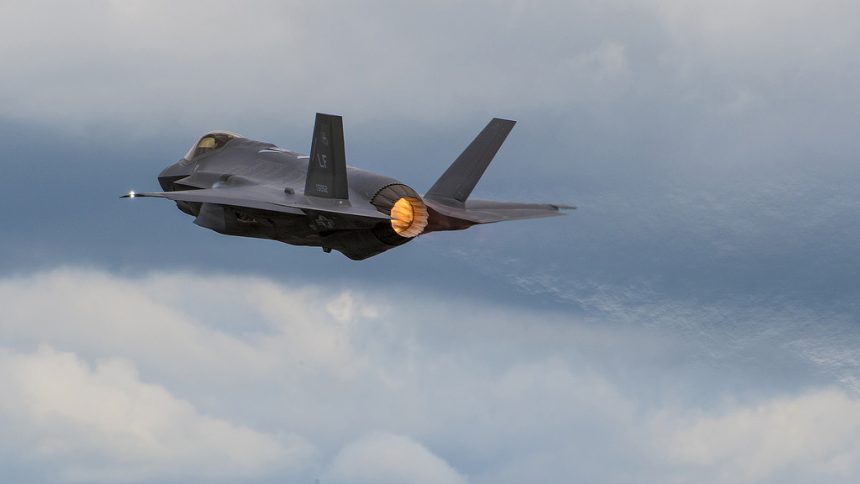Lockheed Martin Test Pilot Billie Flynn just performed his first F-35A Flight Demo At Paris Air Show. Did he “crush years of misinformation about what this aircraft is capable of doing” as promised?
Set against a brilliant French sky with puffy cumulus clouds Lockheed Martin’s star test pilot Billie Flynn thrilled the crowd at Le Bourget Airport outside Paris, France today as he wheeled and tumbled his F-35A Lightning II through an aerobatic demonstration some critics claimed was nearly impossible.
The performance included low speed, high angle of attack maneuvers, tight turning, numerous rolls and maximum performance climbs that would silence the critics who said the F-35 could not dogfight and “crush years of misinformation about what this aircraft is capable of doing“.
While the F-35’s advanced sensor and integration avionics are designed to win the fight long before the “merge” of aerial combat into visual dogfighting range, this demonstration aimed to show the controversial Joint Strike Fighter can hold its own in a knife-fight with the Sukhois, MiGs, Chengdus, Shenyangs and other likely adversaries.
At the 2:00 mark in the video test pilot Flynn positions the F-35A at show left and performs a high-alpha, ultra low speed pass, standing the Lightning II on her tail and dancing across the Paris sky as the aircraft’s twinkle-toed elevators maintain stable flight on a boiling cushion of thrust from her growling Pratt & Whitney F135 engine. It is a spectacular sight. Enough to silence the skeptics? Hard to say. Most probably not enough, considered what people are used to see when a 4th Gen. aircraft or the F-22 are able to do during an airshow routine.
Returning to lower altirude in the demonstration box, Flynn performs a maximum performance, high-G turn with afterburner similar to what we’ve seen with many other demos. This version of the flight demonstration does not feature the open weapon bay doors as with the F-22 demo we’ve seen many times. One of the F-35A demo routines does include a pass with the weapons bay doors opened.
Honestly speaking the new PAS 2017 routine seems to be more dynamic than expected. But in terms of instantaneous and sustained turn rates the F-35 does not seem to match the performance of the famous super-maneuverable Sukhois, Eurofighter Typhoon, Gripen or Rafale (to name but few).
Still, the unique features of the JSF are its stealth design, sensor fusion capabilities and unmatched SA (Situational Awareness): that is to say all the ingredients for success in modern air-to-ground operations. Comparing the F-35 to an F-22, Typhoon or even F/A-18 in terms of energy-maneuverability is probably wrong and misleading.
So, let us know what are you thoughts after watching this demo:
a) do you think it’s more than enough considered that the aircraft will probably never be engaged in a Within Visual Range dogfight?
b) it’s rather disappointing because super-maneuverability remains a key to succeed in modern scenarios?
You judge.
Top image: file photo of the F-35 Heritage Flight Team’s F-35A validation flights on July 5, 2016.









